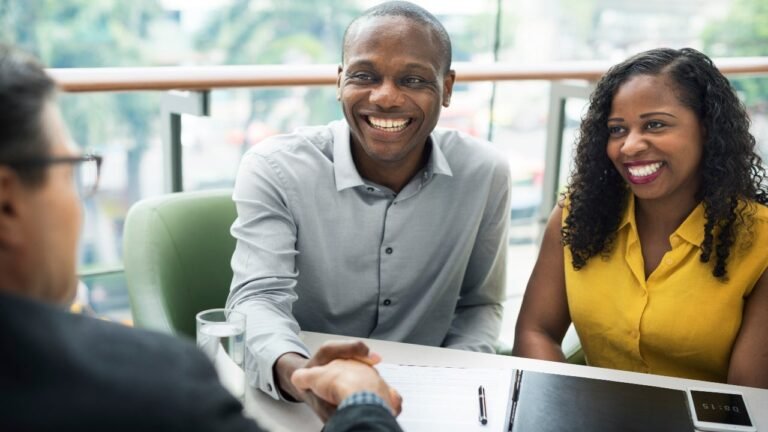Key takeaways
A closing disclosure is a set of documents that contains the finalized details of your mortgage.
Mortgage lenders are required by law to provide the closing disclosure at least three business days before the closing.
You can correct errors on the closing disclosure before the closing, but the loan amount and interest rate can’t change unless there’s a change in circumstances.
What is a closing disclosure?
A closing disclosure is a five-page statement containing the finalized details of your mortgage and closing costs. Your mortgage lender must provide you the closing disclosure at least three business days before closing. That gives you time to compare the final terms and costs with the information you were previously given on your loan estimate, the three-page document you received when obtaining the mortgage offer. If anything is incorrect, surprising or unclear, notify your lender or ask for clarification before the closing.
Importance of a closing disclosure
The closing disclosure presents your final opportunity to review the terms of your mortgage, ask questions and understand what you’re committing to. Importantly, it also informs you of the exact amount you’ll need to pay at closing, as well as how much you’ll pay in total over time for the mortgage.
In addition, the closing disclosure holds the lender accountable to the fees they quoted (with some exceptions — more on that below) and to minimize delays with the closing.
What is the three-day rule for closing disclosures?
The closing disclosure three-day rule, formally referred to as the “Know Before You Owe” mortgage rule or TRID (the TILA-RESPA Integrated Disclosure rule), went into effect in 2015. This regulation includes a requirement that you receive your closing disclosure at least three business days before closing. The lender can provide the closing disclosure in person, by mail or electronically, such as by email.
Sundays and federal holidays do not count as business days for the closing disclosure timeline. Saturdays count as a business day only if the lender operates on Saturdays.
Take advantage of the three business days to look over all the terms of your mortgage loan, and talk to your loan officer or attorney or settlement agent if you have questions.
If your closing disclosure contains one or more of the following inaccuracies, you’re entitled to a new three-day review period:
If the APR increases more than an 1/8 of a percent for fixed-rate loans or 1/4 of a percent for adjustable-rate loans
If the lender added a prepayment penalty
If the loan product changes
For minor issues like typos, you won’t get a new three-day review, but the lender still needs to provide an updated disclosure.
What is included in the closing disclosure?
Each section of the closing disclosure breaks down the terms and characteristics of your loan and the costs and fees involved.
Loan terms
Check your loan amount, monthly payment, interest rate, prepayment penalty and balloon payment, if applicable, and if the amounts can increase after closing.
Projected payments
These add up to your monthly mortgage payment and include the principal, interest and mortgage insurance (if applicable), as well as estimated escrow and estimated taxes, insurance and assessments, both of which can increase over time.
Costs at closing
This section shows your upfront costs, sometimes called “settlement costs.” It includes loan costs, any lender credits and the amount you’ll be required to pay at closing.
Loan costs
This section includes charges such as an application fee, an origination fee and any points. It also notes any items to be paid by the seller. The loan costs are categorized as “services that the borrower did not shop for” — including the credit report and appraisal — and those that the borrower did shop for, such as the settlement agent fee and title search.
Other costs
These include recording fees, transfer tax (if applicable) and insurance premiums due at signing.
Calculating cash to close
This table breaks down your costs at closing, including any deposits you’ve already paid, credits and anything that has changed since your lender gave you your loan estimate.
Summaries of transactions
This provides a detailed look at your costs, including the home price, your closing costs and the seller’s costs.
Loan disclosures
Here you’ll see legal language describing important characteristics of your loan, such as assumption, demand feature, negative amortization and escrow.
Loan calculations
This disclosure shows the total amount you are agreeing to pay over the life of the loan, including interest charges.
Other disclosures
This includes more details such as the appraisal, missed payments and other aspects of your loan.
Contact information
This includes details on how to reach all the parties involved in your loan.
Confirm receipt
Signing this page at closing indicates that you’ve received it.
Sample closing disclosure
This sample closing disclosure from the Consumer Financial Protection Bureau (CFPB) includes an interactive checklist on the right side of the document.
Difference between closing disclosure and loan estimate
The loan estimate and closing disclosure contain similar information, but they serve different purposes at different stages of the mortgage origination process. Unlike the closing disclosure, you’ll receive the loan estimate much earlier in the process, within three business days of applying for the loan. The loan estimate might include some closing cost information, but it won’t be complete and finalized until the closing disclosure.
How to check your closing disclosure
With your most recent loan estimate handy, go through each line of the closing disclosure and compare the two documents, including:
Review the spelling of your name.
Verify the property address.
Ensure that the loan amount and description match the loan estimate.
Double-check the loan type, interest rate, monthly payment and other terms.
Confirm you understand all the costs and fees, and check if any new ones have been added.
Look to see if your lender will be using an escrow account, and make sure you understand how it works.
If anything on the closing disclosure looks incorrect, notify your loan officer and attorney or settlement agent as soon as possible. Depending on the nature of the mistake, the document might need to be revised, potentially delaying your closing date. Do not feel pressured to close without a corrected closing disclosure.
What can and can’t change on the closing disclosure
Some costs on the closing disclosure are allowed to change, while others cannot. Lenders can’t deliberately understate your costs and then raise the prices at closing time.
In general, if any of the following was changed from your loan estimate or looks unfamiliar, contact your lender and ask for an explanation.
Loan information: This section should match your loan estimate.
Loan amount: Note that the loan amount can change, for example, if your closing costs were rolled in.
Interest rate: If you locked your rate, the rate should not change unless details of your application changed, like your credit profile or your income.
Estimated total monthly payment: This can change; so make sure you can afford the amount stated for the duration of the mortgage.
Services borrower did not shop for: These are third-party services that your lender requires to process your loan, such as an appraisal fee or credit report fee. Compare these services to your loan estimate.
Services borrower did shop for: Fees for services that you shopped for related to your mortgage will be listed here, like a pest inspection, a title search or a survey.
Closing costs/cash to close: The terms are similar, but don’t mean the same thing. Cash to close includes the closing costs and the remaining down payment, which can change (more on that below.)
Note that some closing costs cannot increase, such as fees paid to the lender or mortgage broker, or fees for required services that you did not shop separately for, or that you paid for from an affiliate of your lender or mortgage broker. Transfer taxes cannot increase, either.
Other closing costs can increase without limit, including prepaid interest, insurance premiums, initial escrow account deposits and fees for some third-party services the lender does not require.
There is a third category of closing costs that are permitted to increase by up to 10 percent. These include recording fees and some fees from third-party service providers. If there is a change in circumstances, these costs could increase by more than 10 percent.
If you’re concerned about closing costs, you can try negotiating with your lender or consider a no-closing cost mortgage.
Keep in mind: If there is a “change in circumstances” that requires a new loan estimate, your costs can change by any amount. A change in circumstances could be deciding to get a different type of loan, for example, or putting down a different amount.
Closing disclosure FAQ
What happens if I don’t receive a closing disclosure?
Can I compare closing disclosure estimates from other lenders?
What happens after signing the closing disclosure?

